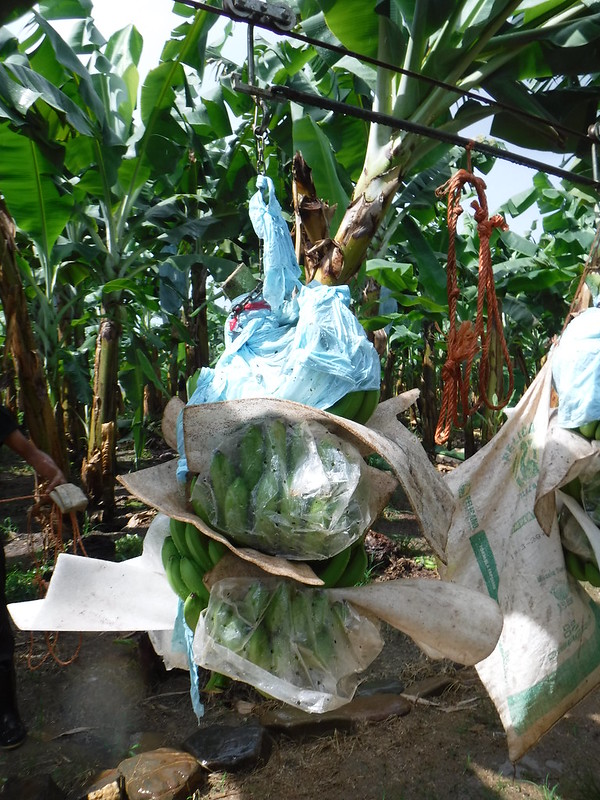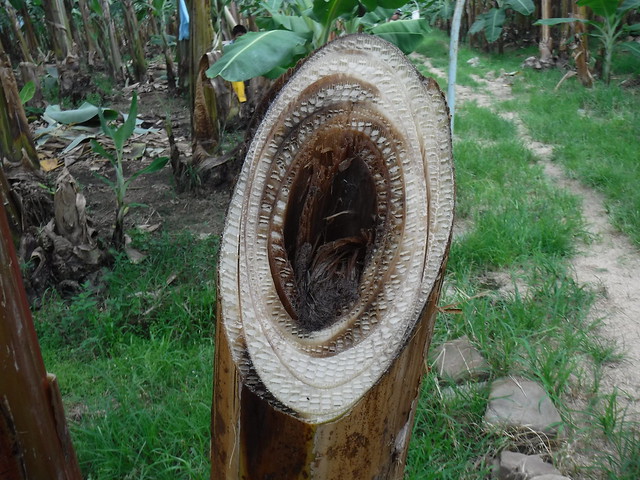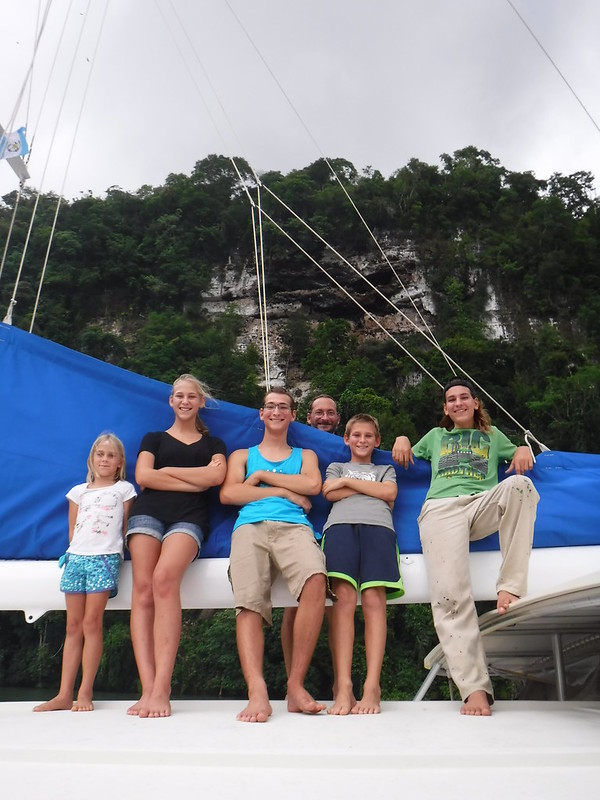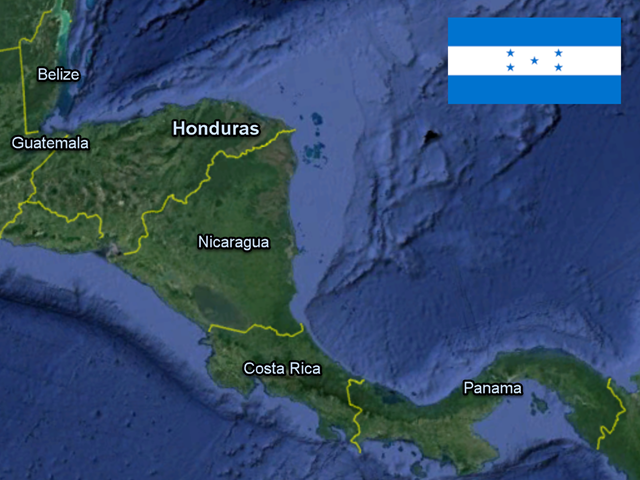Basic Facts
Capital: Belmopan
People/Customs: The population of Belize is 387,879, of which more than half are are Mestizo, a quarter are Creole (descendants of white Baymen and their black slaves), more than a tenth are Mayan, and the remaining small fractions are Garifuna, German-speaking Mennonites, Europeans, North Americans, and Chinese. A large percentage of the people are Roman Catholic or Protestant, but there are also small percentages of Jews, Muslims, Jehovah’s Witnesses, Mormons, Mennonites, Seventh-Day Adventists, and practitioners of traditional Mayan and African religions. (Garifuna are the descendants of black slaves and Carib natives which were relocated to Belize from the Bay Islands, where they had been brought from St. Vincent. They have their own distinct music, language, dress, and religion.)
Language: English is the official language, but an English creole, Garifuna, Mayan dialects, and Spanish are also spoken.
Climate: Belize has a dry season and a wet season and is inside the Hurricane zone (June-November). Cold fronts moderate the temperature and bring wind from North America during the winter and spring, and tropical waves bring heat and humidity from the Atlantic Ocean and Caribbean Sea during the summer and fall. Average temperatures in the coastal regions are between 75 and 80 degrees Fahrenheit.
Food/Farming: typical dishes consist of rice, beans, cabbage or salad, corn tortillas, and some sort of meat (pork, chicken, beef, or seafood). The Fyffe’s fruit company exports Belizean bananas to Ireland and the U.K. Other tropical fruits like pineapples, oranges, and mangoes are grown in Belize. Cacao is grown and processed into chocolate. Coconuts are also common, and coconut milk is used for drinking and cooking. Sugarcane is grown for local use and export.
Government: Belize became an independent state in 1821. Though it is no longer a British Crown Colony, the Queen is still the symbolic head of state of Belize, which is a parliamentary constitutional monarchy. The Prime Minister is the head of the government and there are two houses in the National Assembly, which makes laws. There is an independent judiciary and a Supreme Court for hearing serious cases.
Currency: the Belize dollar (BZD), equivalent to about $0.50 USD.
Art/Music/Culture: The culture of Belize is influenced by its many ethnic groups, among them the British, Spanish-speaking Mestizos, Mayan tribes, African slaves, Garifuna people, German-speaking Mennonites, and American expats. One popular type of music is called “punta rock,” a hybrid of soca, calypso, reggae, salsa and meringue. There are also traditional Garifuna drumming groups. Artisans carve wood and slate, make pottery, embroider cloth, make beaded necklaces, and weave baskets.
History
The Mayan civilization plays a large part in Belize’s history. The Maya settled in Belize starting in about 1500 BC, and there were as many as 1 million people living in Belize during the late Classic Era of Mayan civilization (600-1000 AD). When the Spanish arrived in the early 1500’s, there were three distinct Mayan territories (each with its own dialect which persists to this day). The Mayans believed that the world was flat, and they believed in many different gods, so when the Spanish arrived, they tried to convert the Mayans to Christianity. They were largely unsuccessful, though some Catholic concepts were added into the Mayan religion.
When the conquistadors arrived in Belize, they claimed it for Spain but did not develop settlements because of the lack of resources and the hostile Indian tribes of the Yucatan. In the 1600’s, the British wood-cutters started to come and settle the land. In 1763 and 1783, the Spanish granted land to the British wood-cutters but still retained sovereignty until 1786, when the British started to take control of the area that is now Belize in order to protect themselves from incoming Spanish settlers. In 1798, the Spanish sent a fleet to remove the British Baymen, English and Scottish settlers and pirates, using force, which resulted in the battle of St. George’s Caye. On September 3-5, the Spanish tried to barge their way through Montego Caye shoal, but were stopped by the British defenders. And on September 10, the Baymen repelled the Spanish fleet again in a short engagement with no known casualties.
By the early 19th century the British sought to reform the settlers and abolish slavery, but because of social and economic limitations, the lives of the imported blacks changed little after emancipation in 1833, and they were still used as the labor force to harvest logwood, which was used in the dyeing of cloth, and Mahogany, a hardwood. In 1836, Central America became independent from Spain and the British claimed the right to administer the area. It officially claimed Belize in 1862 as a British crown colony and renamed it British Honduras.
In the years 1847-1853, many thousand Spanish-speaking people started to settle the area resulting in the Caste War in Yucatan, causing the Mayans to flee to the west and the north and allowing the Spanish-speaking refugees to colonize Belize.
The Belize Estate and Produce Company dominated the politics and the economy for much of the late 19th and early 20th centuries, with British landowners holding half of the colony as privately-owned land. The economy collapsed after the Great Depression, when demand for mahogany went down. Soon after, there was a devastating hurricane, which worsened the economic situation. Unhappy with British management of the colony, the colonists began to demand independence. By 1964, a new constitution gave Belize full autonomy. In 1970, Belmopan replaced Belize city as capital and in 1973, British Honduras changed its name to Belize. Belize claimed its independence from Great Britain in 1981, though it is still considered a Commonwealth nation. Guatemala, which had never accepted British control, refused to recognize that Belize was a sovereign nation until 1992, claiming that the entire country was actually part of Guatemala. The border disputes have been contentious and continue to the present day.
Today, Belize’s reef, tropical islands, and rain forests make it a perfect vacation spot. Many North Americans have migrated to English-speaking Belize and made it their home. In 2006, crude oil was discovered near Spanish Lookout, and Belize exports crude oil but imports diesel and gasoline, since it has no refineries. Belizean bananas and oranges are also exported around the world.
Land forms/Flora and Fauna
Belize has a land area of 8,800 square miles, and the second largest barrier reef in the world. It also has hundreds of mangrove islands, barrier islands, and vast areas of marshy wetland. The Maya mountains have rivers and waterfalls and are covered in rainforest. On land you might find jaguars, the national animal of Belize, along with many other large cats, agoutis, tapirs, iguanas, and snakes. In the air you might see toucans, quetzals, sea-birds and many different species of parrot and macaw. In the water you might find whale sharks, tropical fish, turtles, and manatees.
Things to do
Hiking in the Jaguar Preserve, going to the Bunches of Fun Banana Farm near Placencia, white-water rafting, river tubing, or cave tubing, snorkeling or diving on the reef, zip-lining, kayaking, fishing, taking a boat tour up the Monkey River, and going to the Mayan ruins like Caracol, Xunantunich, or Nim Li Punit,
Bibliography
“Belize.” Wikipedia. June 28, 2018.
“Belize: the Arts.” Encyclopedia Britannica. June 28, 2018.
Rauscher, Freya. A Cruising Guide to Belize and Mexico’s Caribbean Coast. 2004: Windmill Hill Books, Madeira Beach, FL.
“Timeline: Belize.” BBC News online: www.news.bbc.co.uk . June 28, 2018


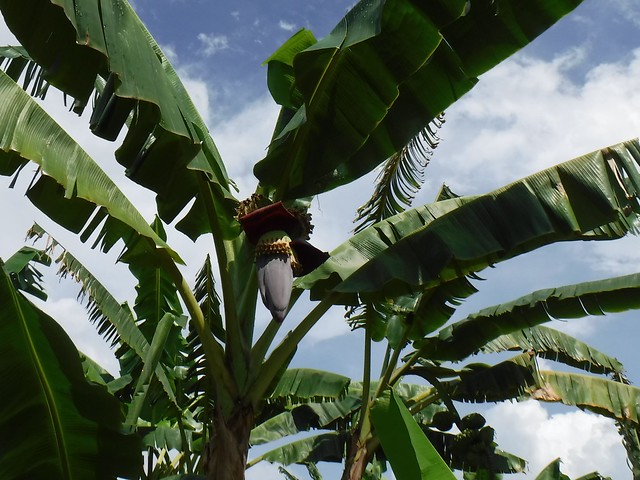
![Baby Bananas]](https://farm2.staticflickr.com/1750/41940765025_03e8a50f46_c.jpg)
